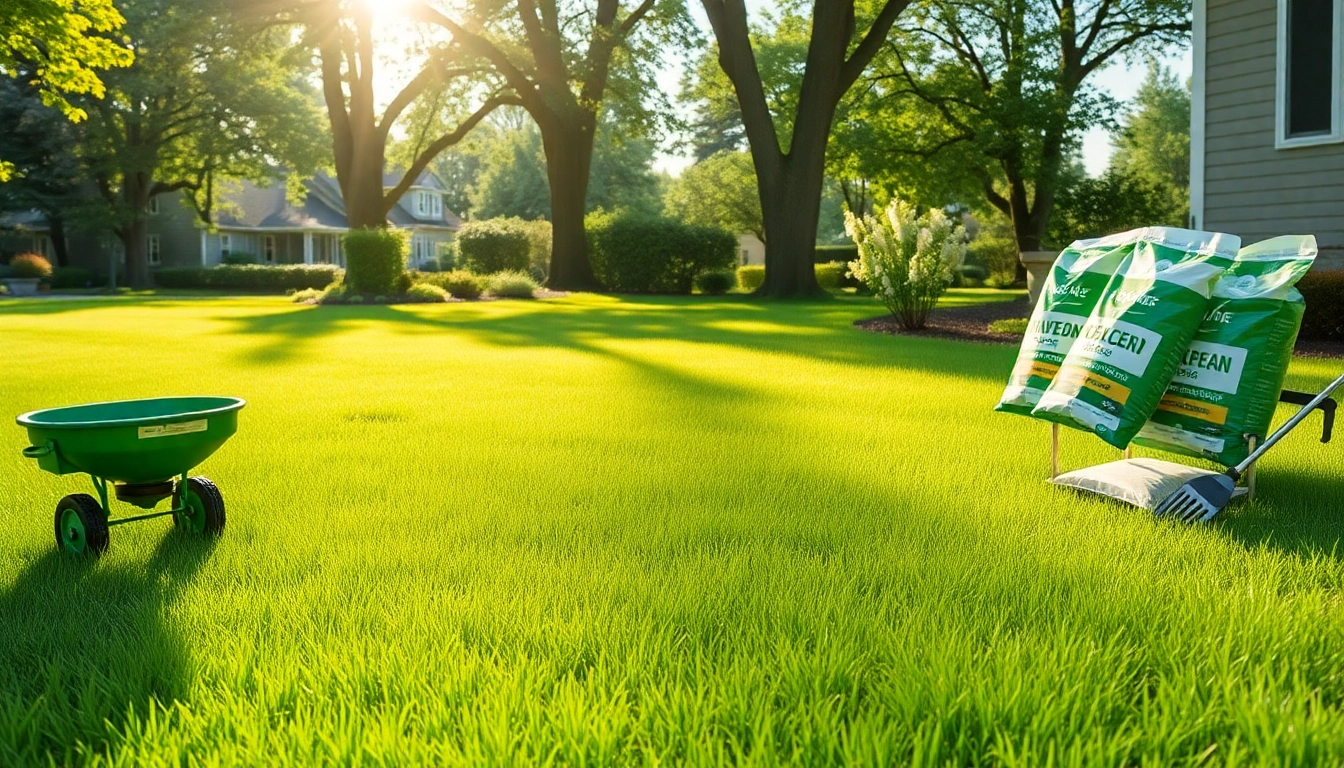Understanding Over Seeding and Its Benefits
What is Over Seeding?
Over seeding is a lawn treatment technique that involves spreading grass seed directly over your existing lawn without disturbing the soil or uprooting the existing turf. This process enriches your lawn by enhancing its density, improving color, and filling in bare patches effectively. For those looking to revitalize their lawns, over seeding can provide the answer by introducing new grass varieties or simply reinforcing the existing turf’s health.
Advantages of Over Seeding Your Lawn
Over seeding comes with a plethora of benefits that can significantly improve the quality of your lawn:
- Thicker Lawn: One of the primary advantages is a denser lawn, which not only looks better but can also withstand foot traffic and resist weed competition more effectively.
- Improved Tolerance: Introducing new grass varieties can increase your lawn’s drought, heat, and shade tolerance, making it more resilient.
- Weed Suppression: A thicker lawn reduces the sunlight reaching weed seeds, thus preventing them from germinating.
- Enhanced Soil and Grass Health: By adding new seed, you’re promoting healthier growth patterns and mitigating issues like thatch buildup.
- Cost-Effective: Over seeding is generally more affordable than complete lawn renovation and delivers fast results with minimal effort.
Common Grass Types for Over Seeding
When considering over seeding, selecting the right type of grass is essential. Here are some common grass types suitable for different climates:
- Cool-Season Grasses: If you live in a cooler region, varieties such as Kentucky bluegrass, perennial ryegrass, and tall fescue are ideal for over seeding.
- Warm-Season Grasses: In warmer areas, Bermuda grass, zoysia grass, and buffalo grass thrive. Choose a mix appropriate for your local climate conditions.
When is the Best Time for Over Seeding?
Seasonal Timing Considerations
The timing of over seeding plays a crucial role in its success. Generally, late summer to early fall is considered the optimal time for cool-season grasses. The soil temperatures are warm enough for seed germination, and the subsequent cooler weather helps in rooting without the stress of summer heat. For warm-season grasses, spring or early summer is ideal as they thrive in warmer temperatures.
Signs Your Lawn Needs Over Seeding
Recognizing the signs that your lawn needs over seeding can help you maintain its health and appearance:
- Bare spots or thinning areas
- Excessive weed growth
- Color variations across the lawn
- High foot traffic areas showing wear
Climate Factors Affecting Over Seeding
Climate plays a critical role in successful over seeding. For instance, dry spells can hinder germination, while excessive rain can wash away seed. Additionally, any frost can damage new seedlings. Therefore, understanding your local climate, including temperature fluctuations and precipitation patterns, is essential for effective over seeding.
How to Prepare for Over Seeding
Lawn Assessment and Preparation Steps
Preparation is key to a successful over seeding process. Start with the following assessment and preparation steps:
- Evaluate Lawn Health: Assess the overall health of your lawn. Determine the areas that need over seeding and examine the existing grass type.
- Mow Your Lawn: Mow your grass lower than usual, which helps new seeds contact the soil better and prevents existing grass from overshadowing new seedlings.
- Clean the Lawn: Remove any debris, such as leaves, twigs, and thatch, to ensure a clear surface for seed application.
Essential Tools for Successful Over Seeding
To ensure an effective over seeding process, gather the following tools:
- Lawn mower
- Rake
- Spreader (broadcast or drop)
- Fertilizer (starter or slow-release)
- Watering equipment (hose or sprinkler)
Preparing Your Lawn’s Soil
Proper soil preparation will help new grass seeds germinate and establish themselves:
- Loosen the Soil: Use a rake to lightly aerate the top layer of soil. This can help improve seed-to-soil contact.
- Soil Testing: Conduct a soil test to assess pH and nutrient levels. If necessary, amend the soil to create optimal growing conditions.
Step-by-Step Guide to Over Seeding
Choosing the Right Grass Seed
Selecting the right seed is crucial. Consider factors such as your climate zone, soil type, and sun exposure when choosing a suitable grass seed. Look for high-quality seed blends that include endophytes for disease resistance.
Applying Grass Seed Correctly
To achieve uniform coverage, follow these steps for applying grass seed:
- Spread Seed Evenly: Use a broadcast spreader to apply seeds evenly across the lawn. Follow the recommended seeding rates for the chosen seed type.
- Rake Lightly: Lightly rake over the seeded areas to cover seeds with a thin layer of soil, increasing germination chances.
Aftercare: Watering and Fertilization
Proper aftercare is vital for the success of your over seeding efforts:
- Watering: Keep the soil consistently moist, watering lightly every day until seeds germinate. This may take 7-14 days, depending on the grass type and conditions.
- Fertilization: Apply a starter fertilizer to provide necessary nutrients for new seedlings to establish strong roots.
Common Mistakes to Avoid During Over Seeding
Over or Under Seeding
Many homeowners mistakenly apply too much or too little seed during the over seeding process. Over seeding can lead to overcrowded grass, increasing competition for nutrients and water. On the other hand, under seeding will create bare patches and weak areas in your lawn.
Ignoring Soil Conditions
Neglecting to assess and prepare the soil adequately can result in poor germination rates. Always perform a soil test and amend as necessary before over seeding.
Poor Post-Seeding Care
After seeding, failing to maintain consistent moisture and providing adequate nutrients can derail your efforts. Regular watering and the timely application of fertilizers are necessary to help seedlings thrive.



